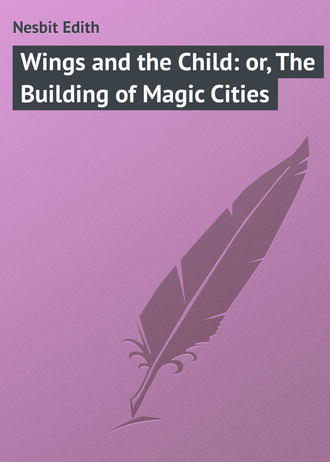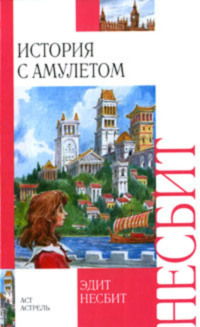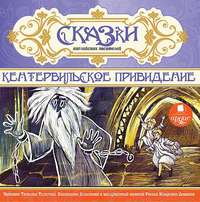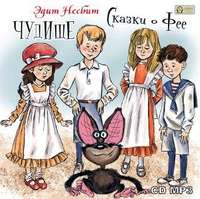
Wings and the Child: or, The Building of Magic Cities
I shall never see the Alhambra now, but it is because of the Spanish Court at the Crystal Palace that there will always be an empty ache in my thought, an ache of the heart, a longing that is not all pain, at its name, a feeling like a beautiful dwarf despair, in that I never shall see that blue and red and golden glory, and the mystery of its strange mis-shapen arches that open to the whole world of dreams.
Say of the Mid-Victorians what you will; they did at least know, when they set them, the seeds of Romance. Think of Euston Station: those glorious pillars, the magnificent dream of an Egyptian building to loom through the Egyptian darkness of London's fogs. And the architecture of Egypt was too expensive, and Euston remains, a magnificent memorial – the child of genius stunted by finance.
There was Madame Tussaud's too, a close link with the French Revolution: the waxen heads of kings and democrats, the very guillotine itself. And Madame Tussaud's daughter, with the breathing breast that seemed alive, and the little old woman in the black bonnet, Madame herself, who had seen the rise of Republics and the deaths of kings. These things, last time I trod those halls, were put in the shade, their place usurped by vulgar tableaux, explaining to the bored spectators what happens to a vulgar young man with a wife whose skirt is much too short in front and her hair very badly done, if he leaves his home for the society of sirens and cardsharpers. The tableaux were cheap and nasty, and taught one nothing that one could not learn from the Police News.
Once there were nightingales that sang in the gardens on Loampit Hill. Now it is all villas. Once the Hilly Fields were hilly fields where the children played, and there were primroses. Once the road from Eltham to Woolwich was a grassy lane with hedges and big trees in the hedges, and wild pinks and Bethlehem stars, and ragged robin and campion. Now the trees are cut down and there are no more flowers. It is asphalt all the way, and here and there seats divided by iron rods so that tired tramps should not sleep on them. And the green fields by Mottingham where the kingcups used to grow, and the willows by the little stream, they are eaten up by yellow caterpillars of streets all alike, all horrible; while in London old handsome houses are tenements, and children play on the dirty doorsteps of them with dead mice and mutton bones for toys. In the country women wear men's tweed caps instead of sunbonnets, and Hinde's curlers by day instead of curl papers (which if you were pretty, looked like wreaths of white roses) by night. And everything is getting uglier and uglier. And no one seems to care. And only the old people remember that things were not always ugly, remember how different things were – once.
Therefore I would plead with all those who have to do with children to resist and to denounce uglification wherever they may meet with it, and to remember that there is knowledge which goes hand in hand with beauty. To show a child beautiful things, and to answer as well all the questions he will ask about them, to charm and thrill his imagination with pictures and statues and models of the wonders of the world, to familiarise the child with beauty, so that he knows ugliness when he meets it, and hates it for the outrage it is to the beauty he has known and loved ever since he was very little – this is worth doing. If we would make beauty the dear rule of a man's life, and ugliness the hated exception, we should make beauty as familiar to the child as the air he breathes, and if we associate knowledge with beauty the child will love them both.
CHAPTER VII
Of Building and Other Matters
A moment of rapturous anticipation lights life when the kind aunt or uncle has given the bricks, when the flat, sliding lid has been slipped back, and the smooth wooden cubes and oblongs have tumbled resoundingly on table or floor.
"I am going to build a palace," says the child. Or a tower or a church. And, the highest hopes inspiring him, he sets out on the new adventure. But he does not build a palace or a church, or even a railway station. What he builds is a factory, or a wall, or, in the case of the terra-cotta bricks, a portion of a French gentleman's country villa – the kind you see dozens of along the railway between Paris and Versailles. And however strong the child's desire that what he shall build shall be a palace or a church, that is, something beautiful and romantic, what he does build will always be the last thing he does, or ought to, admire. The fault is in the materials. They are lacking both in quality and quantity. No box of bricks that can at present be bought for money will build anything that can satisfy an imaginative child. An ordinary box of bricks – a really handsome one – measures, say, 12 by 8 by 2 in. If anything admirable is to be built from this amount of material the material ought to be presented in very small cubes, oblongs and arches – say 1 in. by ½ in. for the largest bricks, and going down to ¼ by ¼ by ¼ in. Given these proportions a really pretty though undistinguished building might result. But in the box of bricks 12 by 8 by 2 in. the smallest cube measures ¾ in. and the largest brick 9 by ¾ by ¾ in. These long slabs of surface cannot be broken and disguised in such small buildings as the only ones which the materials are enough to build. Hence, the deadly monotony of façade, broken only by the three or, in the case of the really handsome box, five arches, and suggesting nothing so much as a "works" or a workhouse.
In the bricks themselves there is not enough variety. The stone bricks, it is true, have broken out into a variety of ugly shapes and a blue colour with which you can, if you like, build a Mansard roof. But a Mansard roof in a coarse ugly blue tint, is no thing of beauty. Besides, it needs a solid substructure to support it, and if you make your building solid, every brick in your box will be used up, and all you will have to show for it will be a partially built wing of a peculiarly undesirable villa residence, replete with every modern inconvenience. Nor must it be supposed that the difficulty can be met by adding more and more boxes of bricks. Add them, by all means; and the result will be a larger and probably an uglier factory, or a completed, and therefore more completely hideous, villa. Unless you are a millionaire, and have a toy cupboard as big as a pantechnicon, you will never have enough bricks to build up the solid masses which rest the eye, and give solidity and dignity to architecture. Among such solid masses steps are not the least important. Every child knows that a really good flight of steps will take half the bricks in his box and leave insufficient material for the edifice to which the steps were intended to lead up. The tall broad smooth wall, its quiet surface disturbed only by one or two windows, a flight of steps and a doorway, is for ever out of reach of the child who has only bricks wherewith to build.
The arches supplied with boxes of bricks are usually few and badly proportioned. There is seldom any provision for setting them up in a colonnade.
The pillars which will support the ends of two arches are too wide for the end arch, which is single. This difficulty is dealt with in stone bricks, but not in wooden ones; at any rate so far as my experience goes.
There never was a time, one supposes, when so much money was spent on children and their toys. It is impossible to believe that, should some toy maker design and put on the market really desirable bricks for children, there would not be a ready sale for them. I suggest, then, that bricks are too large, and too small – and that what is needed is much smaller bricks, and much larger ones. The bricks in the old chest in our nursery started with 2-in. cubes, and went on in gradations of 2-in. to the largest brick – 12 by 2 by 2 in. The chest itself must have been at least 4 by 2 by 1½ ft. Another detestable quality in our modern bricks is their inexactness – a sixteenth or even a quarter of an inch, more or less, is no more to the maker of bricks nowadays than it is to a bad dressmaker. Our bricks were well and truly cut: they were of seasoned oak, smooth and pleasant to touch – none of the rough-sawn edges which vex the hand and render the building unstable; they were heavy – a very important quality in bricks. They "stayed put." I suggest that such bricks as these, supplemented by arches of varied curves, but unvarying thicknesses, and slabs of board varying in breadth but not in length, would not be a toy beyond the purse of kind uncles and aunts, and certainly not beyond the means of our Council schools. The slabs of boards are to build steps with and to make roofs with. Every child who has ever built with bricks feels the reckless wastefulness of using for steps the bricks so much needed for walls and towers. And who has not experienced the aggravation of finding when his tower is built that he has used up all the long bricks near its foundation and has now none left which are long enough to lay across its summit and form its roof? The slabs of board should be, like the bricks, of seasoned oak, and should be an inch thick. There should be plenty of arches – so as to render possible some sort of resemblance to Norman and classical architecture.
But bricks alone, however beautiful and varied, cannot as building material have the value which material freely chosen would have. Children love to make mud pies, and to build sand castles, because the material is plastic and responds with more or less of docility to their demands upon it. Also there is always enough of it, which there never is of bricks, or for the matter of that, of plasticine. I can imagine a splendid happiness for a child in a bushel of plasticine – but the sticks of plasticine are too small to be made into anything architecturally satisfying; and much too expensive for ordinary children to have in any but such quantities as encourage niggling. You will notice that children never tire of building sand castles on the sea-shore – but they would soon tire of building with a quart of damp sand on a table. It is true that the sea washes away your sand castle, usually before it is finished, but its end is finely catastrophic and full of damp delightful incident. Also the climax has the great essential of drama – it is inevitable. How different the demolition of the brick-built house by mamma, who wants space for cutting out, or by Mary, who desires to lay the table. The most promising of palaces, the most beautiful of bridges, are, at the urgence of these grown-up needs, swept away, and so, never being able to finish anything, the builder becomes discouraged. Perhaps he takes to the floor as an eligible building site, only to find his buildings exposed to the tempestuous petticoat of Mary, or the carelessly stepping high-heeled shoes of mamma. The same thing happens with a dolls' school, or a dolls' dinner-party, or any game requiring pageantry of any sort – so that little girls who would like their dolls to be actors in some scene of magnificence find no safe place for the actors save in their arms – and nurse with enforced premature maternal fussings the doll who, in happier circumstances, might be a Druid or a martyr, or Francis the First at the Field of the Cloth of Gold. It is better to the child's mind that the cherished doll should safely be baby for ever, than that it should be Francis the First and get walked on.
In any house where space makes such a thing possible, a table might be set aside for children, to be their very own – a table on which neither food nor millinery should ever trespass. Of course it is needful that toys and pseudo-toys should be "put away" daily, but it is not necessary that they should all be put away. Those which are being used in some splendid half-developed scheme might surely be allowed to stay where they are, so that it may be possible to go on with the game next day. A truce might be called of that ruthless tidying up which, every day, destroys the new idea, and compels the child each day to produce a new scheme instead of allowing it to work on yesterday's and bring it to something a little nearer the perfection which it touched when the child's mind first conceived it. But, it may be urged, children leave everything half-finished, and go off to something else. Of course they do – but clear away the half-finished thing, and you will find when they come back from the butterfly flight after some other interest, that they will not be pleased with you.
"I've put all your bricks nicely away," you say proudly; and Tommy will say "Bother!" in his heart, even if his lips are sufficiently trained to avoid that expletive and to substitute: "I do wish you hadn't: I wanted to finish building my tower."
You see one thing leads to another. It isn't that children are any more bird-witted than we are: it is that they have not yet learned to restrain the thousand curiosities, desires, and creative impulses proper to their age. You, of course, if you desired to set up a tableau of the Field of the Cloth of Gold, would sit down with a bit of pencil and the back of an envelope and jot down all the properties required for staging the scene. But the child who has "had" the Field "in History," and whose imagination has been stirred by the name of it – a thing that will happen under the stupidest of teachers – sets up Henry and Francis in paper crowns and only then begins to see that tents and banners and cloth of gold are lacking. Perhaps he goes off to the village shop to get flags, perhaps to your handkerchief case for tent-cloth, perhaps to the meadow beyond the orchard to gather buttercups. While on any of these quests some supremely important event may strike across his plans, and overshadow them – a new kitten, a gift from the gardener of plants for his little garden, or the fact that some one is going fishing. Then Francis and Henry are forgotten, the buttercups left dying on the doorstep, and the tent-cloth crammed into the pockets among string, stamps, acid drops, and pieces of the watch he took to pieces last holidays and never put together again, and he will follow the new trail. But he will come back to the Field of the Cloth of Gold, and if you have "tidied up" the kings and put their crowns in the wastepaper basket the child will be disappointed and worried, his imagination checked and his scheme baffled.
His annexation of your handkerchiefs will not occur if you have accustomed him to come to you or to his nurse for the means to his small ends; but if there is no one to whom he can apply for help, you will find that he will not stick at the sacred threshold of your handkerchief case. The tents of the Field of the Cloth of Gold will be far more important to him than the inviolability of that scented treasure-house – unless, of course, you happen to have explained to him exactly how much you dislike that your handkerchiefs should keep the sort of company they meet with in his pockets. Then, if he loves you, and has found you reasonable, he will refrain, while wondering at your prejudices. But he will – or ought to – find some other material for tents – letter paper perhaps. Letter paper makes quite good tents, though not nearly so good, of course, as handkerchiefs folded diagonally – supported by a central pole, say a penholder, and fastened down at the tucked-in corners with pins or rose thorns. You can explain to him that rose-thorns hurt handkerchiefs, but you will not punish him if this has not occurred to him. And this brings one to the question of crime and punishment, of which perhaps I had better say what I have to say before I go on talking about bricks and how to supplement them. As I was saying, one thing leads to another.
CHAPTER VIII
The Moral Code
In attempting to explain and enforce a moral code, the first and most essential need is to formulate definitely to oneself the code which one proposes to enforce and to explain. There is nothing from which children, and subject human beings generally, suffer so much as the incoherence of the thought of those in authority over them. Before you can begin to lay down the law you must know what that law is, and your heart, soul, and spirit must not only know it, but approve it, before you can gain a willing obedience to it from those on whom you wish to impose it. By this I do not mean only that we ought to make up our minds whether this, that, or the other isolated act is right or wrong, as it occurs, but that we ought to have a clear perception and knowledge of the things that are right and the things that are wrong, and have a standard which we can apply to any new action brought under our notice, so that, measuring the new act by our old standard, we shall be able to say, with some sort of rough accuracy, "This is wrong," or "This is right."
And the standard of expediency is not a good one for this purpose, nor is the standard of custom, nor yet the standard of gentility or the standard of success in life. Children are not good judges of expediency. The law of mere custom will not be strong enough to bind them when desire calls with enchanting voice to forbidden things. Gentility and the gospel of getting on will leave them cold. You may at first deal merely with a succession of unrelated particulars, saying, "This is right," "This is wrong," beating down the children's questionings by your mere Ipse dixit; but a time will come when it will not be enough, in answer to their "Why is it wrong?" "Why is it right?" to answer "Because I say so." The child will want some other standard which he himself can apply. The standard of what you say may be a shifting one, and anyhow, he cannot be at all sure what you will say unless he knows what is your standard, the standard by which you will decide whether to say, in any given case, that a thing is wrong or right. And in order that you may clearly set before the child your own moral standard you must first have set it very clearly before yourself. It is not enough to say, "Stealing is wrong," "Lying is wrong," "Greediness is wrong." If you feel that these things are wrong because they are contrary to the will of God, you will not find that that explanation is sufficient for a child unless he knows very much more about God than His name and certain miraculous and incomprehensible attributes of His. He will want to know what is the will of God, to which these wrong things are contrary. And he will want very much to know the definite right as well as the definite wrong. You will have to give the child a standard that can be applied to positives as well as negatives.
There is a very simple standard by which to measure the actions of children – and, much more severely, our own actions. It is set up in the words of Christ: "Do unto others as you would they should do unto you" – a standard so simple that quite little children can understand and apply it, a standard so severe that were it understood and applied by us who are no longer children, the warped, tangled, rotten web we call civilisation could not endure for a day. There is no other standard by which a child can judge its own actions, and yours, and judge them justly.
Having fixed your standard it will be necessary to try your own actions by it as well as the child's. And this standard will give you the only vital code of morality, because it compels the continual exercise of imagination, the continual preening and flight of the wings of the soul. You cannot order your life by that Divine precept without a hundred times a day asking yourself, "How should I like that, if I were not myself?" without continually putting yourself, imaginatively, in some one else's place. And when the child asks, "Why is it wrong to steal?" you can lead him to see how little he would like to have his own possessions stolen. When he asks, "Why is it wrong to lie?" you may teach him to imagine his own bitterness if others should deceive him. It is, of course, much easier to say, "It is wrong because I say so," or even "because God says so"; but if you want to mark it right or wrong, to grave it deeply and ineffaceably on the tables of the heart and the soul, teach the child to see for himself how things are right and wrong – and to judge of them by that one Divine and unfailing rule.
Of course even when the child knows what is right he will not always do it, any more than you do: and one of the questions to be considered is how you shall deal with those lapses from moral rectitude of which he, no less than you, will often be guilty. Punishments, the old savage punishments, were revenge, and nothing but revenge, a desire to "pay out" the offender, to take an eye for an eye, a tooth for a tooth. More humane and reasonable legislators have sought to prove that punishment is curative – that the fear of punishment will deter people from doing wrong. A distinguished official of the Home Office gave it as his opinion only the other day that punishment, no matter how severe, will not act as a deterrent, if there is ever so slight a chance of the criminal's escaping it. What would deter would be the certainty of punishment, however slight. Now since you are not omniscient you cannot pretend to your child that if he does wrong you are certain to know and to punish him: if you are silly enough to pretend it, he will find you out immediately, and estimate your lie at its true blackness. You can, however, without any pretence, assure him that if he does wrong he himself will know it, that it will make him feel unclean and nasty, and miserable till he is able to wash himself in the waters of repentance and forgiveness. That if he acts meanly and dirtily he will feel dirty and mean, and if he acts bravely and cleanly he will feel clean and brave. And he will find that what you say is true. But not unless you shall have succeeded in convincing him that your standard is a true standard, and that the things which that standard shows to be wrong are wrong indeed. Here is the highest work of the imagination: to teach the child so to put himself in the place of the one he has wronged that the knowledge of that wrong shall be its own punishment.
No one desires, of course, that a child should be always feeling his own moral pulse: if he has learned that there is a right and a wrong way he will not be always bothering about which way he may be living – it will be only when something goes amiss that he will stop and consider. Just as one does not stop to think whether one is breathing properly, only when one chokes one knows that one isn't.
Punishment, however, should not be confused with the consequences of action, and while children are yet too small to understand all that God may be to them, it is possible to show them the consequences of their misdeeds, magnifying these beyond the consequences of the act to be reprobated and thus pointing the general moral. I mean that one may honourably apply, to the small wrong-doings of childhood, the sort of consequences – proportioned, of course, to the wrong-doing – which would result from such wrong-doing on a larger scale by a grown-up person. It will be exceedingly troublesome and painful for you, but perhaps its painfulness to you may be the measure of its value to the child. For instance, Tommy steals a penny, knowing that to steal pennies is wrong. He is very little, and a penny is very little, and your impulse, if not to slap him, might be to tell him that he is a very naughty boy and have done with it. It will go to your heart to bring home to him the consequences of theft, especially as you cannot do it at once; but if, next time you are about to send him to the shop for something, you say, "No: I can't send you because you might steal my pennies as you did the other day" – this will be hateful for you to do – but it will show him more plainly than anything else what happens to people who steal. They are not trusted. And the same with lies. Show him that those who tell lies are not believed.
But, remembering how it felt to be a child, have pity, and do not teach him these lessons when any one else is there. Let the humiliation of them be a secret between you two alone. Only when a wrong has been done which demands a restitution or an amend should the soul of the child, shamed with wrong-doing, be exposed to alien eyes.
When we sit in judgment on the aggressions and on the shortcomings of others the first need is neither justice nor mercy, but imagination with self-knowledge. The judge should be able to put himself in the place of the accused, to perceive, by sympathetic vision, the point of view of the one who stands before the judgment-seat. The judge is an adult human being, and therefore has some knowledge of the mental and moral processes of human beings. He should use this knowledge; and when it comes to a grown-up judging a child, it is no less necessary for the judge to place himself imaginatively in the place of the small offender. And this cannot be done by imagination and self-consideration alone. Memory is needed. Let me say it again: there is only one way of understanding children; they cannot be understood by imagination, by observation, nor even by love. They can only be understood by memory. Only by remembering how you felt and thought when you yourself were a child can you arrive at any understanding of the thoughts and feelings of children. When you were a child you suffered intensely from injustice, from want of understanding, in your grown-up censors. You were punished when you had not meant to do wrong: you escaped punishment when you had not meant to do right. The whole scheme of grown-up law seemed to you, and very likely was, arbitrary and incomprehensible. And you suffered from it desperately. So much that, even if you have now forgotten all that you suffered, the mark of that suffering none the less remains on your soul to this day.







